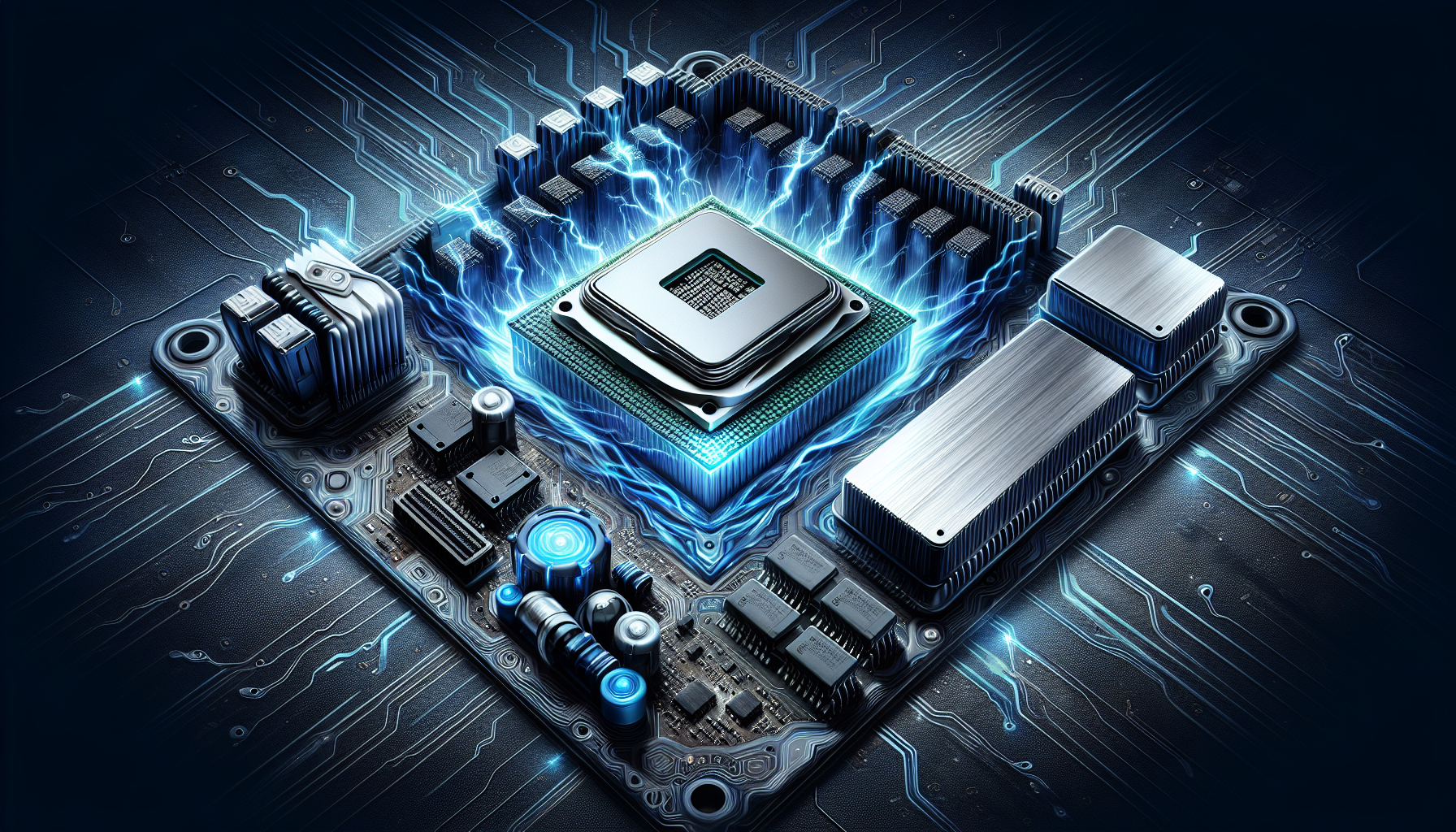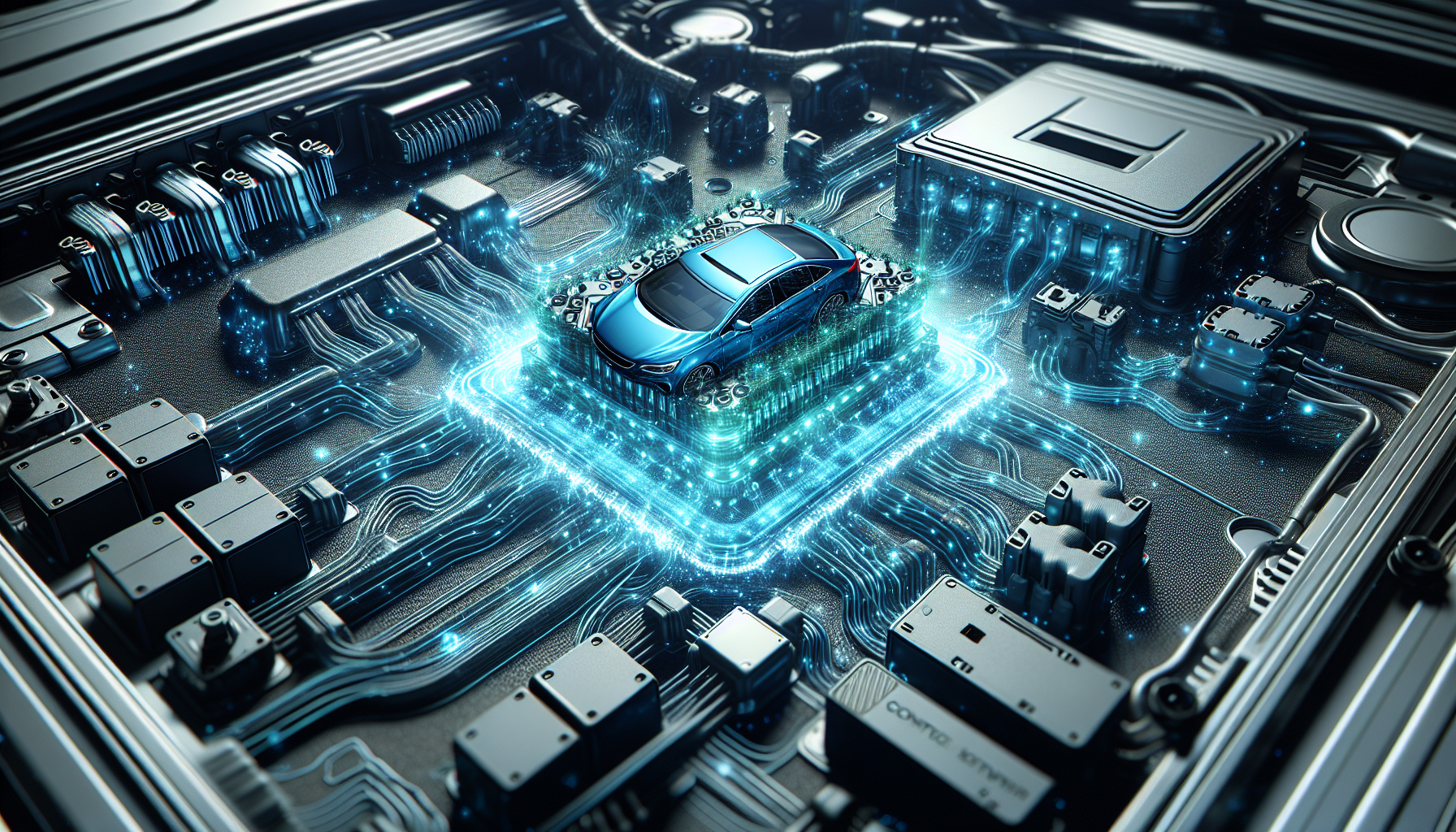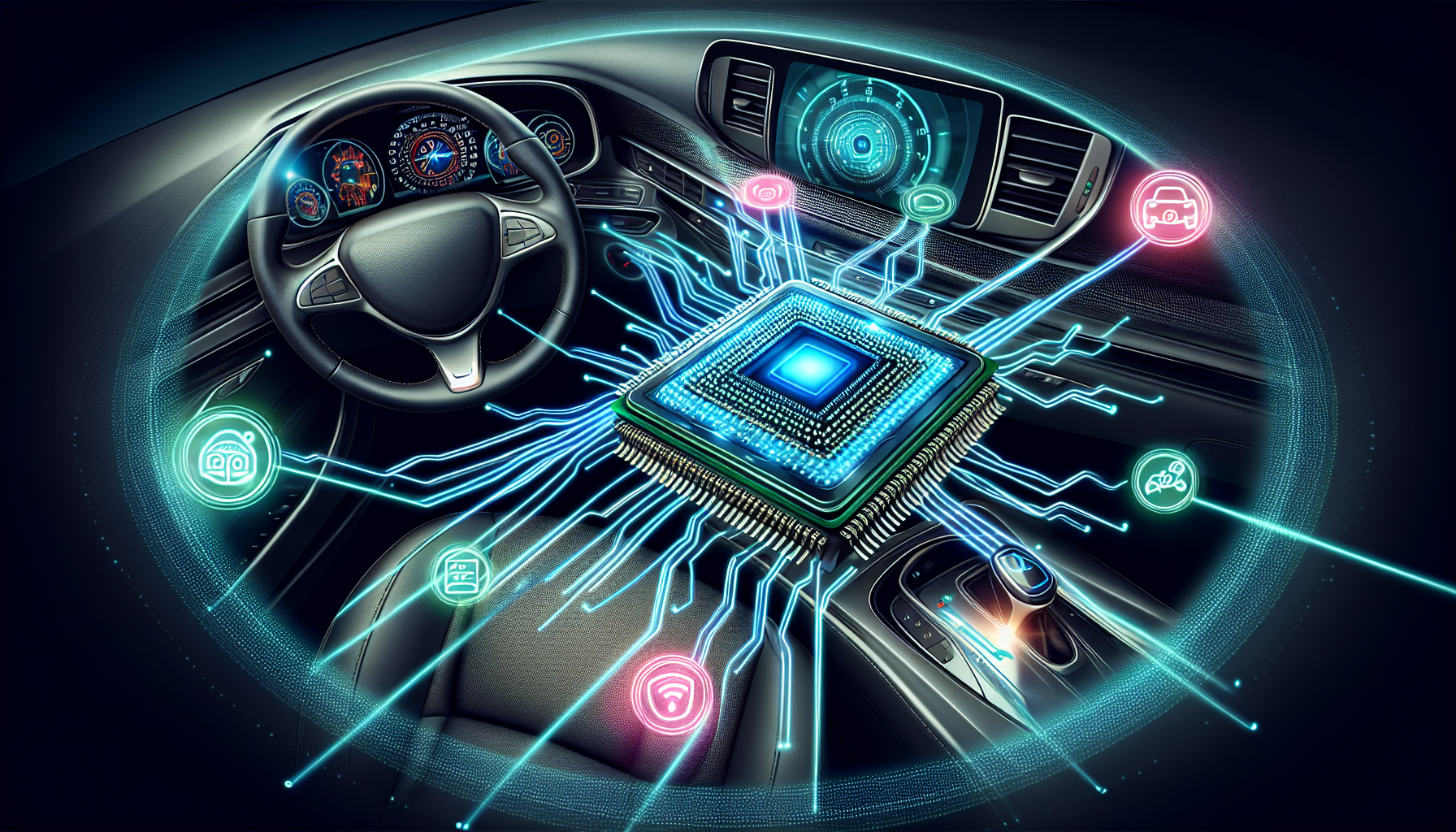The “what is a CPU in a car” is a common question among car enthusiasts, as it is the electronic hub that commands the vehicle’s systems, crucial for managing everything from engine efficiency to advanced safety features. In this article, you will uncover the profound impact of automotive CPUs and their role in the evolution of vehicle technology, all while keeping the information accessible and precise, answering the question: what is a CPU in a car?
Key Takeaways
- A car’s CPU is a specialized microcontroller critical for managing vehicle functions, including the ECU, optimizing performance and efficiency, and designed to withstand harsh automotive conditions.
- The evolution of car CPUs has expanded their role from basic engine management to controlling a wide range of vehicle systems, including emission controls, safety features, and infotainment systems, reflecting advancements in automotive technology.
- Modern vehicles use a network system (like the CAN) that enables ECUs equipped with CPUs to communicate with various sensors and modules, enhancing efficiency and enabling sophisticated features such as advanced driver assistance and emissions management.
The Central Processing Unit (CPU) in Cars: The Heart of the Vehicle's Computer System

In cars, the CPU isn’t merely a component; it’s a specialized microcontroller that oversees a range of functions and components to optimize performance and efficiency. These CPUs are designed to withstand extreme conditions, including high temperatures, gravitational forces, and vibrations, making them uniquely suited for their automotive environment.
As the nerve center of your vehicle’s computer system, the importance of this robust computer has escalated with the increasing technological sophistication of modern cars. The CPU, acting as a silent orchestrator, ensures your car runs smoothly and efficiently by controlling the engine and managing the powertrain.
In fact, for most cars, managing the car’s ecu, also known as the engine control unit (ECU) or engine control module, is the most processor intensive job the CPU undertakes. The CPU in your car’s ECU is responsible for controlling the engine performance, ensuring that everything from fuel injection to ignition timing is optimized for the best possible performance and fuel efficiency.
CPU vs ECU: Understanding the Difference
Though the terms CPU and ECU are frequently used synonymously, a nuanced distinction exists between them. The ECU, or Engine Control Unit, is a specific type of CPU that focuses on controlling the engine’s operation. It adjusts functions such as fuel injection and ignition timing based on data from various sensors to manage critical aspects of the engine’s performance, including emissions, fuel economy, and other parameters. In this context, the electronic control module can be considered as another term for the ECU, emphasizing its role in engine control.
On the other hand, the term CPU refers more broadly to the microcontroller within the vehicle’s computer system. It oversees not only the engine control but also other functions and subsystems in the vehicle. In modern cars, there are multiple ECUs, each equipped with their own CPU to monitor and regulate various functions and subsystems of the vehicle.
The Evolution of Car CPUs: From Basic Functions to Advanced Capabilities

The CPU in vehicles has made significant strides since its advent. The first computer was used in a car in 1968, primarily for engine control functions, including the electronic fuel injection system (EFI). As technology progressed, automotive CPUs were introduced in the 1970s to manage not just engine functions but also:
- emission systems, reflecting the rising emphasis on environmental sustainability
- transmission control
- anti-lock braking systems (ABS)
- airbag systems
- climate control systems
These advancements in automotive CPUs have greatly improved the performance, efficiency, and safety of vehicles, making it more desirable for people to own cars.
By the mid-1990s, every car came equipped with computer systems responsible for controlling sensors, managing combustion, and overseeing electrical system interactions. These developments were driven by the need to enhance the vehicle’s efficiency, reliability, and safety.
Today, the role of the CPU has broadened substantially. From basic engine controls, it now manages advanced systems like safety features, infotainment, and driver assistance, underlining the CPU’s transformation from a simple controller to a comprehensive system manager that’s essential for the functionality of modern vehicles.
Key Components of a Car's CPU System

More than just a simple chip, the CPU system in a car is a harmonious assembly of various components, including computer chips. These components consist of:
- Memory
- Processors
- Voltage regulators
- Circuit boards
All designed to endure extreme temperatures and vibrations.
Memory capacity is one of the key components of a car’s CPU, chosen based on the amount of code and complexity of the tasks the CPU needs to handle. The processors, on the other hand, are the heart of the CPU, performing the calculations and data processing required to manage the vehicle’s systems and processes.
The CPU also requires an appropriate input/output configuration and communication channels. These allow it to effectively manage vehicle systems and processes, gathering data from various sensors and implementing the necessary controls.
Indeed, the CPU stands as an engineering marvel and a testament to the technological innovations revolutionizing the automotive industry.
How Car CPUs Communicate with Various Sensors and Modules

Through a sophisticated network system, the CPU interacts with various sensors and modules in a car. It leverages the Powertrain Control Module (PCM), which serves as the vehicle’s ‘brain’, to interpret sensor data and make decisions regarding engine and transmission management.
Within modern vehicles, a network known as the Controller Area Network (CAN) connects multiple Engine Control Units (ECUs) containing microcontroller CPUs, enabling them to operate as an integrated control scheme. This network functions similarly to a freeway system, where high-traffic highways and local roads enable the flow of data, allowing sensors and ECUs to transmit and access thousands of data points.
ECUs within the CAN network can ‘listen’ to the ongoing data stream of sensor and programming information to gather the specific data needed for their operation. When an ECU requires data from a sensor connected to a separate ECU, it can retrieve the necessary information through the CAN network, negating the need for direct component wiring.
This efficient and integrated security system of communication, featuring a digital display, is a testament to the sophistication and complexity of modern vehicle architecture.
Throttle Position Sensor
The throttle position sensor is an excellent example of how CPUs communicate with various sensors in a car. Operating as a potentiometer, with varying resistance corresponding to the throttle valve angle, it sends voltage signals to the CPU indicating different engine states from idling to full load. These signals provide feedback about the throttle valve’s position, which is critical for adjusting ignition timing, fuel injection, and other engine controls.
With input from the throttle position sensor, the car’s CPU modifies the fuel mixture and ignition timing according to the throttle’s current position, such as enriching the fuel during full throttle. This precise interaction between the CPU and the throttle position sensor underscores the sophistication of modern vehicle systems.
Oxygen Sensor
The oxygen sensor is another important component that communicates with the CPU. Essential for measuring the levels of oxygen in a vehicle’s exhaust gases, these sensors are strategically positioned both upstream and downstream of the catalytic converter to provide accurate readings.
Vehicles generally have at least two oxygen sensors, though some diesel vehicles may be equipped with up to four for better emissions management. The CPU utilizes the data from the oxygen sensors to adjust the combustion process, helping to control emissions and improve fuel economy. This interaction between the CPU and the oxygen sensor is a key aspect of a vehicle’s emissions control system, demonstrating the important role of CPUs in promoting environmental sustainability.
CPU's Role in Modern Car Features

The CPU’s function transcends basic engine control and sensor communication. It plays a crucial role in enabling the advanced features we now associate with modern cars. For instance, CPUs are integral to operating various safety and control systems in vehicles, such as airbag deployment and collision warning systems.
Advanced driver assistance systems like parking assist and night vision functions are enabled through the use of CPUs. These features not only enhance safety but also improve the overall driving experience, making our journeys more comfortable and effortless.
Even infotainment and comfort features, which we often take for granted, are overseen by the CPU. Whether it’s the GPS route mapping system guiding you to your destination or the climate control system maintaining the perfect cabin temperature, the computer controlling the CPU is hard at work behind the scenes, ensuring your ride is as enjoyable as possible.
Challenges and Future Developments in Automotive CPUs
The advancement of automotive technology brings along escalating challenges and expectations for automotive CPUs. One of the major challenges is balancing the demand for processing power with energy efficiency. With the large amount of electronics in modern cars consuming significant power, automotive CPUs must find a way to deliver high performance without draining the vehicle’s energy resources.
This challenge has led to innovative solutions, such as power reduction techniques borrowed from the mobile industry, such as power domain shutoff and voltage and frequency scaling. However, the real-time processing of large data amounts by AI algorithms in automotive CPUs poses a challenge for power waste, necessitating advanced design and verification methods to reduce energy consumption.
As we glance towards the future, there’s an increasing emphasis on improving autonomous driving capabilities. As we move towards autonomous driving, automotive CPUs will need to integrate inputs from multiple sensors like radar and cameras, requiring sophisticated and reliable processing solutions. The future of automotive CPUs is undoubtedly exciting, promising a new era of smart, efficient, and truly autonomous vehicles.
Choosing the Right CPU for Your Car
Given the critical role of the CPU in a car’s functioning, the decision to choose the right CPU for your car is of significant importance. The intended purpose of the CPU has a significant impact on the selection, eliminating certain options that do not meet the required industry standards and specific needs of the project.
The size of the vehicle, its operating conditions, and any application-specific requirements greatly restrict the range of appropriate CPUs, dictating a customized approach to selection. Moreover, ensuring the CPU can be validated for production environments, as well as accounting for any necessary future software modifications, is crucial.
When it comes to choosing the right CPU for your car, it’s always a good idea to seek expert advice. Specialists who are knowledgeable about pairing projects with suitable CPUs can provide valuable insights and guide you through the decision-making process. After all, the right CPU can significantly enhance the performance, efficiency, and overall driving experience of your car.
Summary
In conclusion, the CPU is the technological powerhouse at the heart of our vehicles. From managing engine performance and communicating with various sensors to enabling advanced car features and preparing for the future of autonomous driving, the CPU plays a pivotal role in shaping our driving experience. As we continue to navigate the exciting landscape of automotive technology, one thing is clear: the CPU is steering us towards a smarter, safer, and more efficient future on the road.
Frequently Asked Questions
Where is the CPU located in a car?
The CPU in a car can be located in various places, including under the hood, at the base of the windshield, or inside the car, such as in the passenger footwell. Date not provided.
Do all cars have a CPU?
Yes, all cars manufactured today contain at least one computer, known as the Electronic Control Unit (ECU), which is in charge of monitoring engine emissions and adjusting the engine for efficiency. This ensures that emissions are kept as low as possible.
Why do cars need a CPU?
Cars need a CPU to control and manage various functions such as air conditioning, braking systems, air bags, and more. The car's computer system monitors and regulates its overall performance, making it a crucial component in modern vehicles.
Is a CPU like an engine?
Yes, a CPU can be compared to an engine as it acts as the primary processing unit, similar to how an engine powers a vehicle.
What is the ECU on a car?
The ECU, or electronic control unit, is a computer in modern cars and trucks that is responsible for controlling the engine and other components' functions, similar to a home computer or laptop. It manages systems such as fuel injection and ignition to keep the engine working smoothly.

